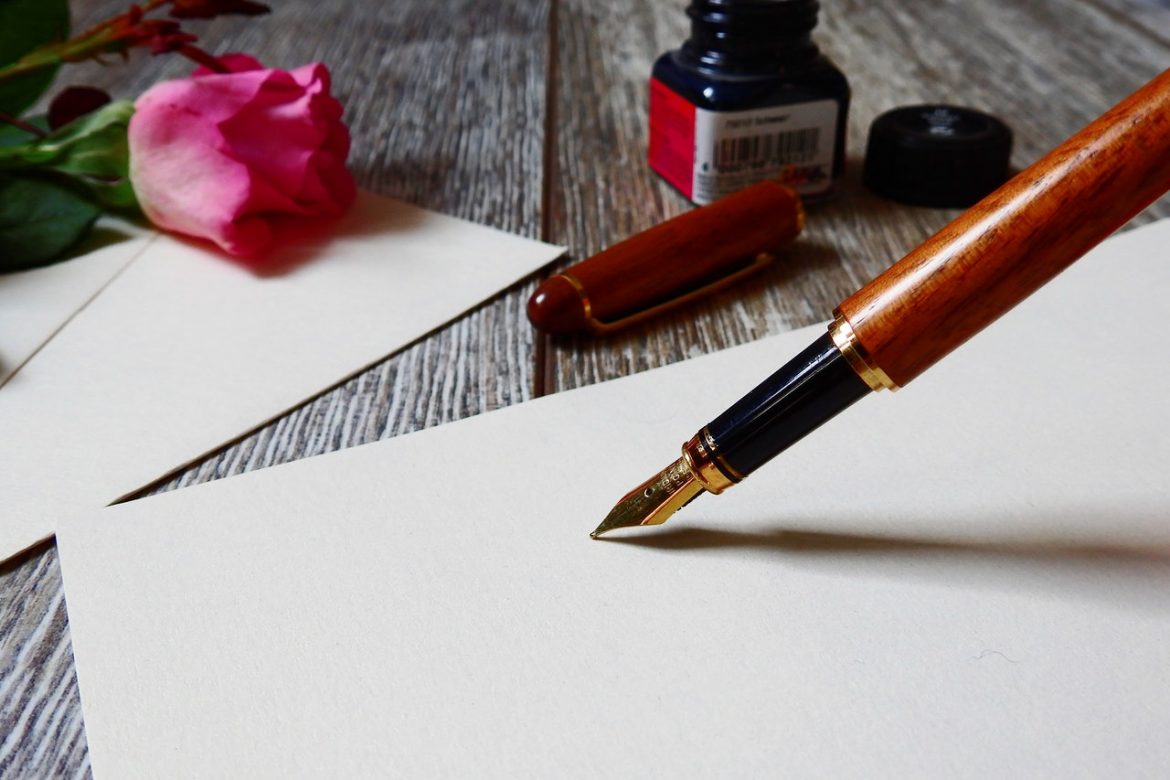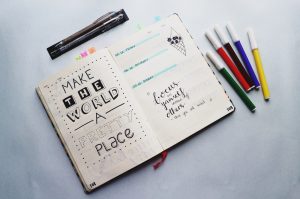Is using a fountain pen old fashioned? Not quite. You might be surprised by the different benefits of using one. Contrary to what most people think, however, fountain pens are not all that complicated to use. While there might be a bit of adjustment period, you’re bound to get the hang of it quite quickly.
Fountain Pens vs. Regular Pens
Why use fountain pens? Here are some comparisons you should consider.
Cost:
Ballpoint pens are usually thrown away once the ink runs out. Sure, there are varieties that offer ink refills, but even then you’d have to repurchase a refill once your current one runs out. While this might be more affordable during your initial purchase, the cost does add up after some time.
On the other hand, a fountain pen can be used over and over again without the need for refills. If maintained well, you don’t even need to replace any of its parts for years. While the initial cost is a lot higher, depending on the model and brand you choose, the cost over time is much lower compared to ballpoint pens.
Environmental Impact:
As we have established, ballpoint pens do produce waste because of the parts and accessories that need to be replaced. In the span of a year, you might go through 10 or even more pens, which can pile up after some time. There are biodegradable options, but wouldn’t it be better to just choose one that’s reusable?
A good fountain pen can last you years before you need to dispose of it. Even then, you’ll find alternatives that are made out of biodegradable material such as wood.
Ease of Use:
Ballpoint pens require more pressure when you write, which often causes stiffness and cramps. They are more familiar, but how many times have you had to take a break when writing because your hand was starting to hurt?
Fountain pens require much less pressure and come with finger grips that add to its ease of use. Note that if you’re heavy-handed, you might need a bit of practice when switching to a fountain pen.
Issues with Leaking:
Fountain pens do tend to be more prone to leaking, especially if there are structural deformities due to constant use. Leaks can also happen during air travel, if the air remains trapped inside the reservoir.
Ballpoint pens are much less prone, even during flights. The only time these might leak is if its body gets damaged or too much pressure is placed on the fountain pen ink cartridge.
Overall, a fountain pen seems to be the more economical choice. Any potential issues you may experience while using it can be prevented through simple measures. The learning curve isn’t too steep either, though it really depends on the person using it as well.
Origins of the Fountain Pen
Who invented the fountain pen? The first documented device similar to it is from 953 AD, when Abu Tamim Ma’ad al-Mu’izz Li-Din Allah, the ruler of the Fatimid Caliphate, sought a new writing tool that would prevent ink from staining his hands and clothes.
This was later improved by none other than Leonard da Vinci, who recorded his studies of the first capillary action, which is what allows ink to flow even without gravity. His discovery would propel the technology used in fountain pens centuries later.
It was Petrache Poenaru who first patented the fountain pen design back in 1827. Lewis Waterman would improve on Poenaru’s design in 1884, which better regulated the flow of ink to nib. His innovations would become the foundation for Waterman Fountain Pen Company, which is still in business at present.
Mass Production of Pens and Decline in Use
With demand comes the need to provide a steady supply. When ballpoint pens entered mass production, the use of fountain pens dropped significantly. After all, ballpoints were much cheaper and easier to use. The fountain pen, however, found a niche market. They became a status symbol and were associated with luxury—no different from an expensive watch or accessory.
At present, this fancy ink pen is experiencing a renaissance, but for a completely different niche. While many still consider it a luxury item, particularly the more expensive and designer models, fountain pens have found a place in the creative community as well. Though, one can argue that it has always been a significant part of many forms of art.
Then there are those who use it out of nostalgia. There is something to writing slowly and mindfully, with every stroke carefully done. For those looking for bullet journal ideas, using fountain pens for calligraphy to stylize pages is fast becoming a trend.
How to Use a Fountain Pen
These fancy pens are actually quite easy to use. Keep the following steps in mind to ensure a smooth process.
- Install the fountain pen ink cartridge. This is not too different from loading an ink stick for a ballpoint. Just unscrew the grip section, install, then reassemble.
- How to write with a fountain pen? Always hold your pen at a 45 degree angle to your paper so it writes smoothly.
- Apply minimal pressure to avoid damage to the nib.
- How to store a fountain pen? It is imperative that you keep it capped when not in use.
Different Types of Fountain Pens
Before you go out to make your first fountain pen kit purchase, you should familiarize yourself with the different varieties. Each one serves a specific purpose, so to get the right one for yourself, here’s what you need to know.
Cartridge Fountain Pen
Pros:
- This type of fountain pen comes with a pre-filled cartridge that is also disposable. If you travel often, this is your best bet.
- Refilling can be done quickly, since you only need to swap the cartridge with a new one.
- More budget-friendly.
Cons:
- You have limited options for inks. There is no standard cartridge that would fit every pen so you’re restricted to the ones that fit yours.
- Smaller ink capacity. If you use it a lot, you’ll have to replace the fountain pen ink cartridge more often.
Eyedropper Fountain Pen
Pros:
- These fine pens can hold more ink and are perfect for people who will be using the pen a lot. You can go for longer without needing to refill.
- Limitless ink options because you can use any type of fountain pen
Cons:
- It is a bit more tedious to use since you’ll need to disassemble the pen and use a separate syringe or eyedropper to fill it.
- These fountain pens are more prone to leaking, which is why you’ll need extra accessories such as o-rings or silicone grease.
Piston Fountain Pen
Pros:
- If you’re doing calligraphy and need good ink capacity, this is a good choice to consider.
- You can also use any type of fountain pen ink with it.
Cons:
- These are among the most expensive varieties.
- Refiling is an art in itself, considering the process requires quite a few steps.
How to Clean a Fountain Pen
Cleaning out your pen is key to its longevity. You might imagine it as a complicated process, but this isn’t the case. All you need is running tap water and a towel.
How to Clean a Cartridge Fountain Pen
- Disassemble the pen.
- Remove the fountain pen ink cartridge.
- If refillable, just rinse it out and refill using a syringe.
- Do rinse the front section of your pen, including the nib.
- Allow this to air dry after wiping it with a towel.
How to Clean a Piston Fountain Pen
- Submerge the nib and fill the pen the same way you would with ink, only this time with water.
- Flush out the pen’s contents.
- Repeat this process until the water turns clear.
- Allow to air dry after wiping it with a towel.
Different Types of Nibs
One thing you must remember when looking at fountain pen nibs is that there is a difference between a Japanese and European nib. To put it simply, the Japanese tend to make theirs finer than their European, or American, counterpart.
Extra Fine Nibs
- These are usually used for print writing and illustration. If you’re planning on using your fountain pen for fast sketching or cursive writing, you might want to opt for something else. The thinness of their tips can actually scratch the paper if you write with it too quickly.
Soft Nibs
- These are the nibs that have a flexibility to them, and will bend if you add a bit of pressure when you’re writing. With soft nibs, you can create different variations on your writing, adding thin or broad strokes as needed.
Medium and Broad Nibs
- These create wider and thicker lines of ink. Typically, they are used for print-writing and work that doesn’t require much detail. When using broad nibs, do make sure you’re using the right paper as it can easily bleed through if you’re not careful.
Fountain pen nib material is also in important consideration. Nibs can be made from many different materials, but the most common are gold or stainless steel. Gold provides a bit more spring than steel, but the smoothness of a pen is actually determined by the fountain pen tip.
Conclusion:
The main things you must consider when choosing the right fountain pens for yourself would be: ease of use, price point, and your personal preference. Most people tend to stop using their pens altogether after experiencing difficulties during their first few tries. However, this shouldn’t be the case! Choose the right fountain pen for your current experience level then experiment later, once you’ve gotten the hang of things.
Best Beginner Fountain Pen
Ready to make the switch to using fountain pens? Then here are some of the best models for beginners that you can try.
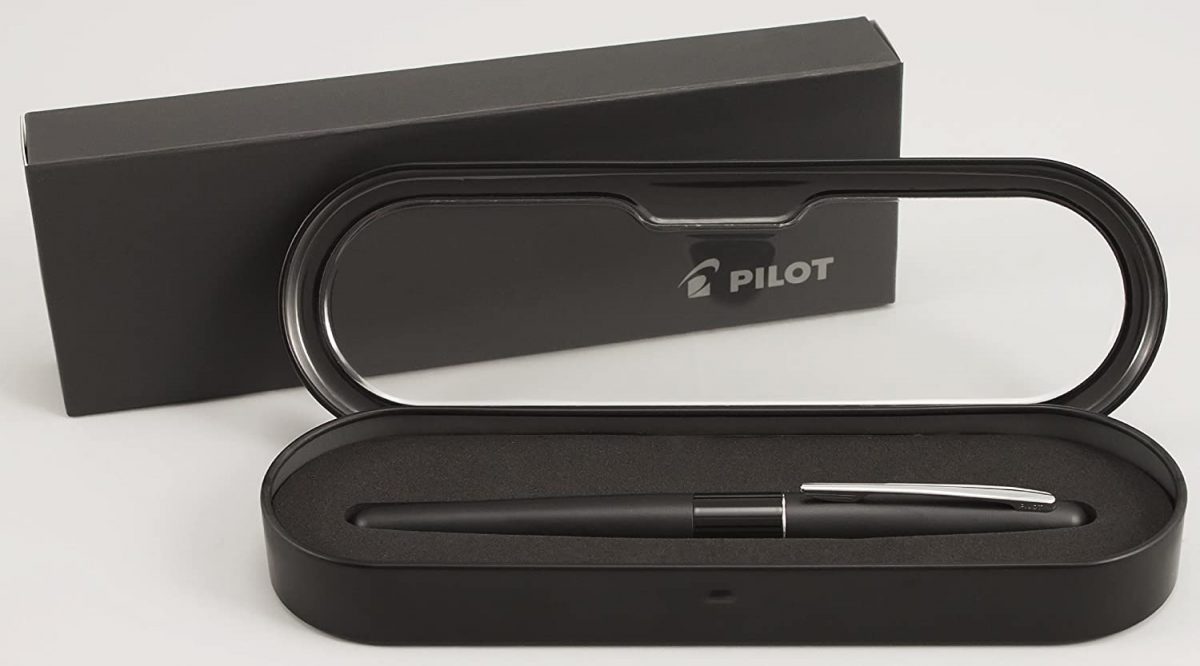

Pilot Metropolitan
- Great entry-level fountain pen.
- It comes with a metal body and a multitude of colors to choose from.
- There are 3 nib sizes: medium, medium italic, and fine.
- Uses Pilot fountain pen ink cartridge, which has eight standard colors.
- Comes with a converter so you can use it with bottled ink.


Lamy Safari Fountain Pen
- Virtually indestructible. This Lamy fountain pen is made out of the same plastic as LEGO bricks.
- Aesthetically pleasing and comes in a good range of colors. Some people even collect these.
- Safari has a full range of nib sizes, not to mention the fact that switching from one to another takes only a few seconds.
- The unique shape might not be for everyone, but it does provide a good grip. Considering that, it makes for one of the best writing fountain pen
Best Affordable Fountain Pen
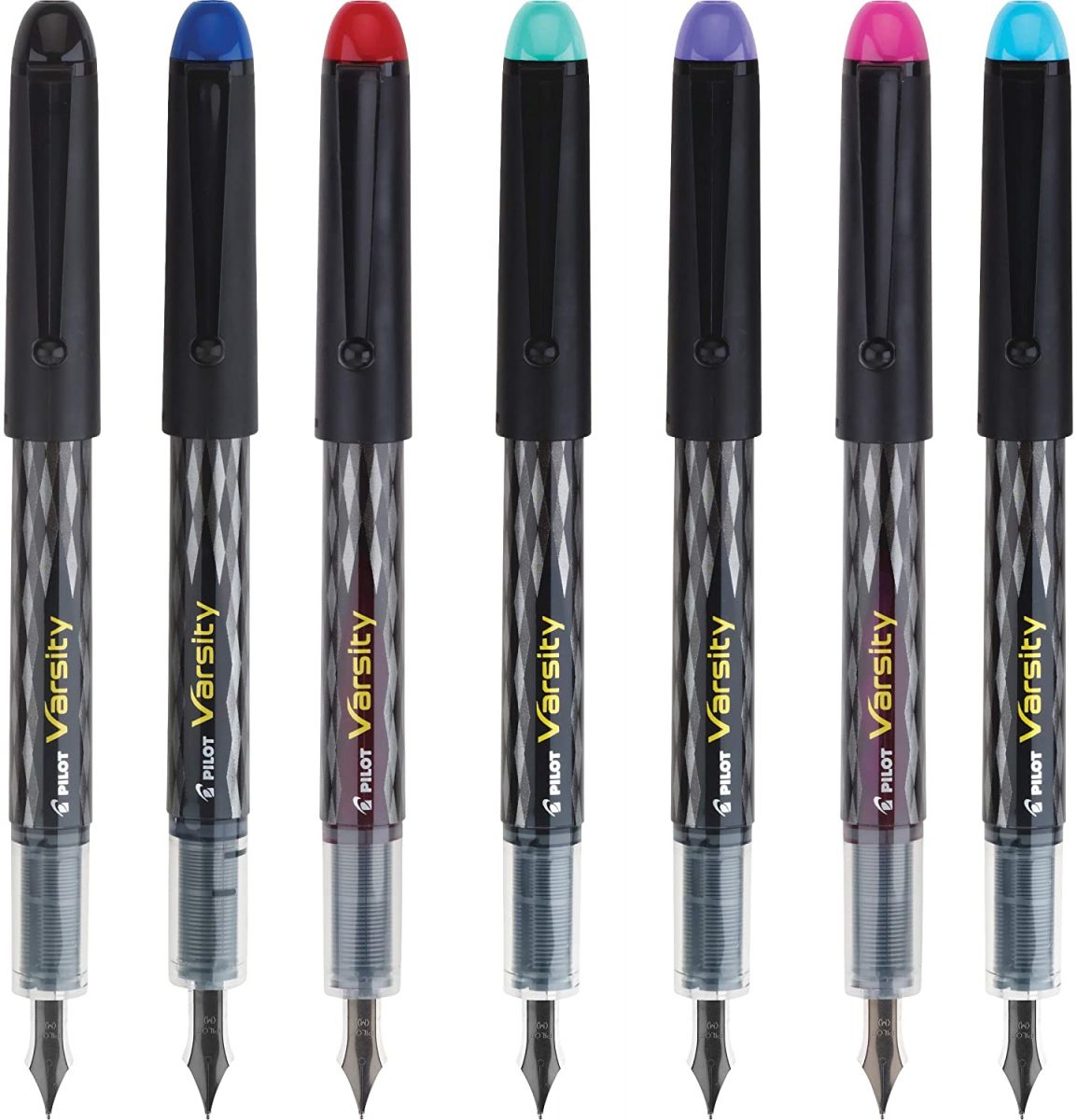

Pilot Varsity
- Sells for about $10 for a pack of five. It is one of the most inexpensive fountain pens.
- Appearance-wise, you get what you paid for. It is one of the best value fountain pen options out there.
- It is also considered to be a disposable fountain pen since there’s no option to refill it. There are hacks available on YouTube, but it isn’t recommended for beginners.
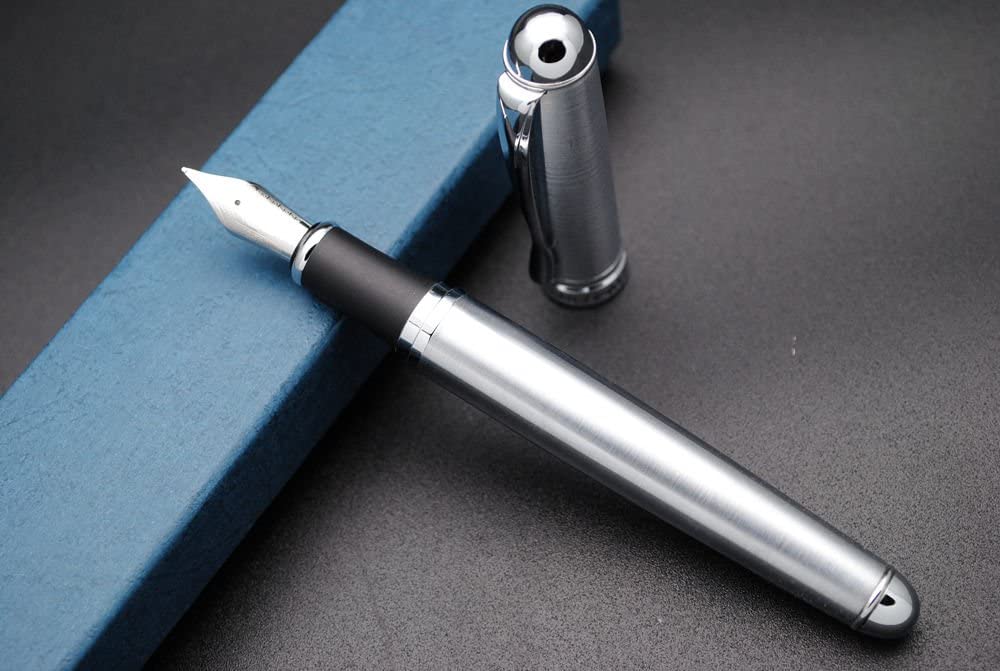

JinhaoX750
- Sells for around $10 per pen, which is well-within the inexpensive range.
- It doesn’t look as cheap as its price, but don’t expect much when it comes to durability.
- The pen is lightweight, which some people might find a little uncomfortable.
- It is the best cheap fountain pen for beginners, especially those who want to practice using a fountain pen before investing in a more expensive model.
Best Fountain Pen for Drawing


Pelikan Classic M200
- This Pelikan fountain pen is on the higher end when it comes to fountain pens, but because of its bendy gold-plated nib, it is the top choice for many artists.
- Note that Pelikan nibs tend to be wide compared to European and Japanese brands.
- The pen itself is compact with a good weight to it. The ink reservoir can hold a good amount of ink and also comes with a piston mechanism.
- The only major downside is its price point, but it is a great fountain pen drawing.
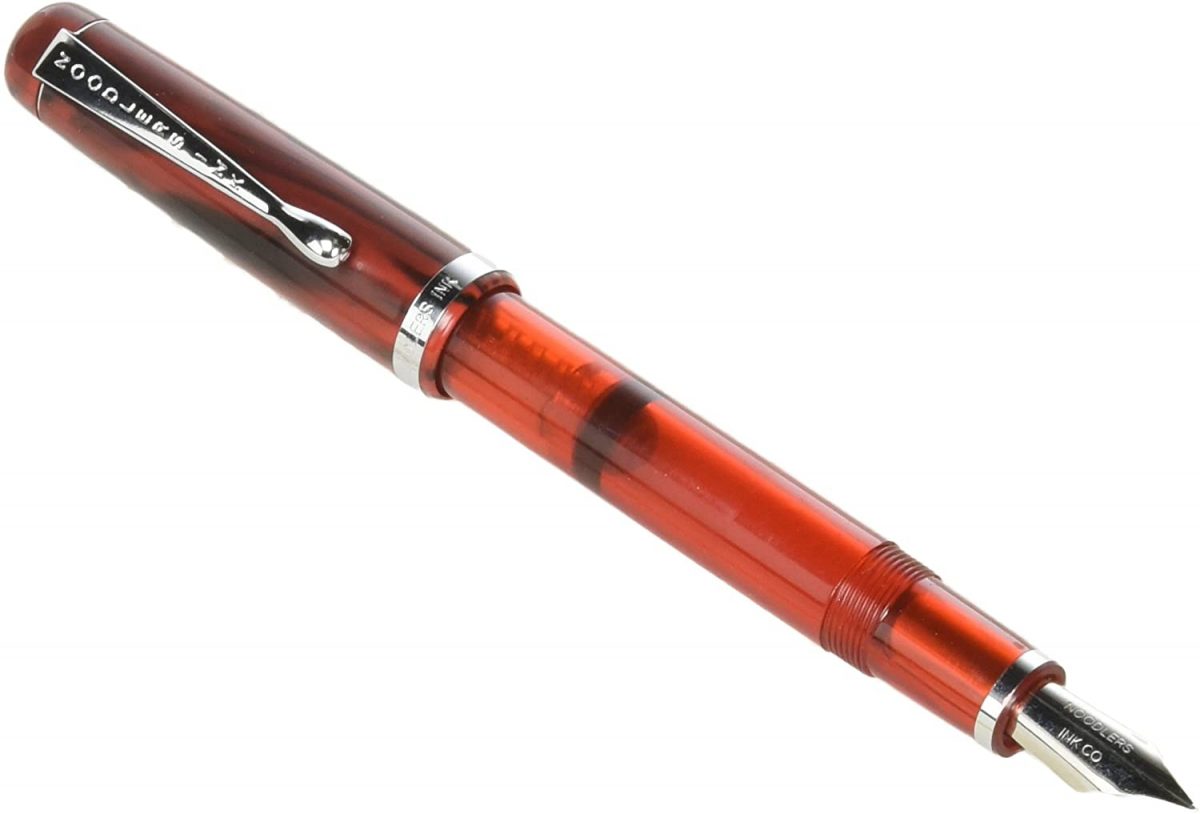

Noodlers Konrad Flex
- Flexible yet broad nib. You will need to apply some pressure to get a variation in width, but it’s easy to get used to after some practice.
- Great for people who are keen on customization since you can tinker a lot with it. This is a common feature in Noodler fountain pens.
- Comes with a piston filling mechanism, which can hold a good amount of ink.
- Compared to the Pelikan, it is slightly more affordable and makes for a great introduction to flex pens. Is it the best flex nib fountain pen? Not quite, but it is versatile enough.
Best Calligraphy Fountain Pen
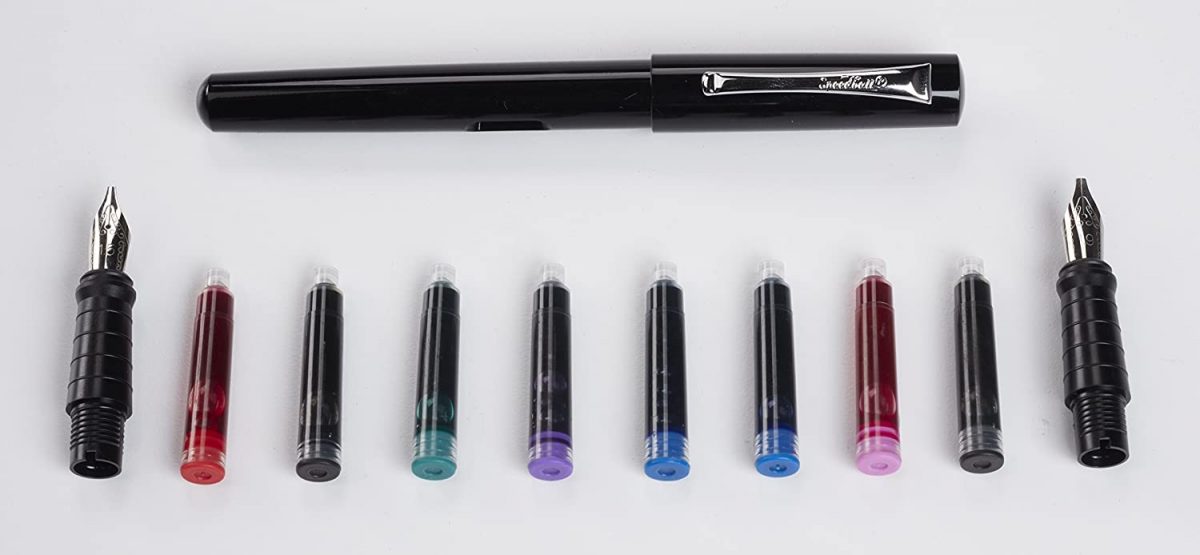

Speedball 002903 Calligraphy Fountain Pen
- Reasonably priced and comes with eight different cartridges (usually two blue and two black), and one for every other color (pink, red, purple, and green).
- Glides smoothly with no bleed-through or puddles of ink.
- Comes with an ergonomic design, which makes it comfortable to hold.
- Three different nib widths, including fine pens, available to help you produce crisp lines when needed.
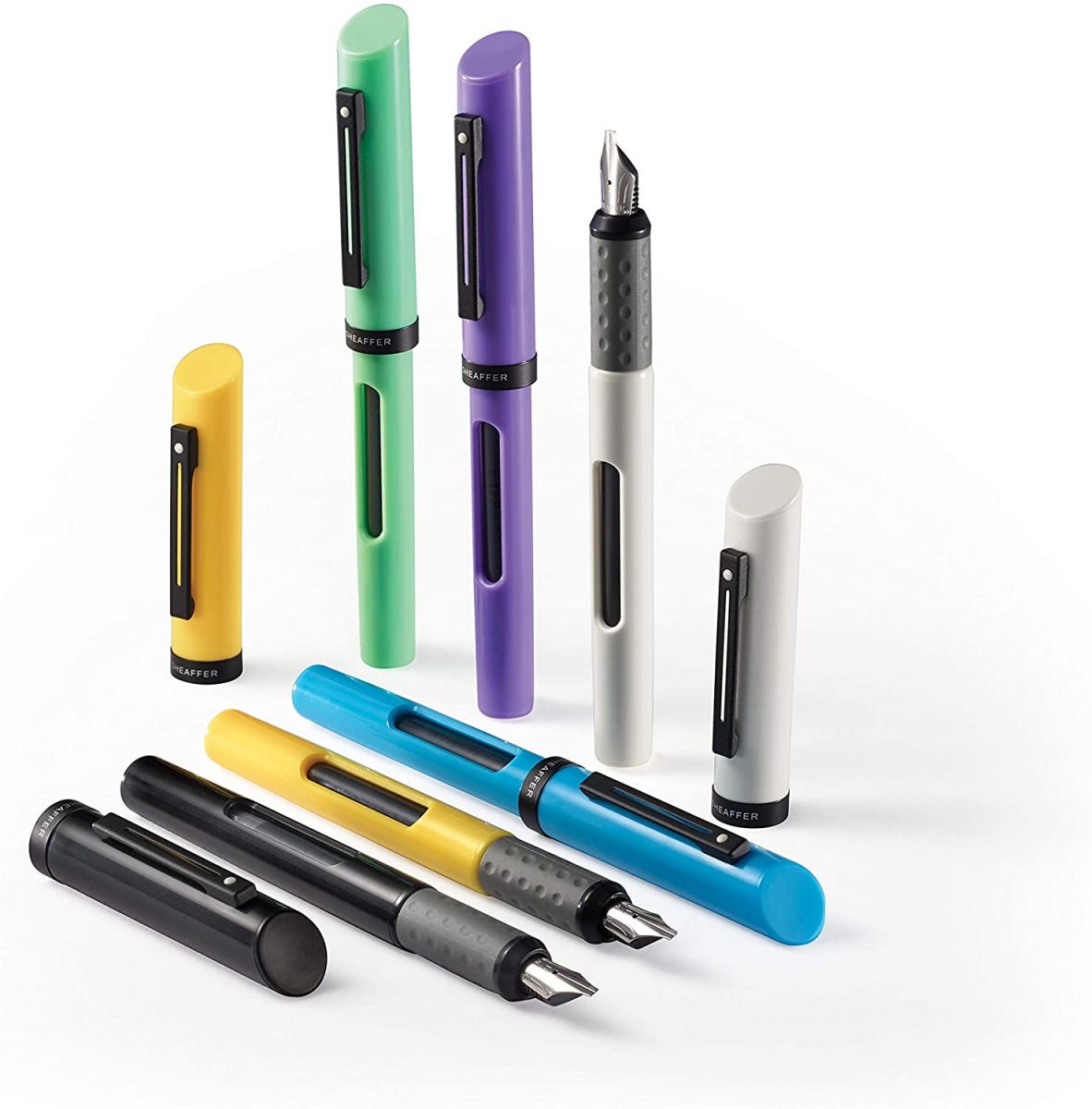

Sheaffer Viewpoint Calligraphy Pen
- This Sheaffer fountain pen is a favorite for many calligraphy enthusiasts, not just for its vibrant color but also for its versatility.
- It comes with a 0.8mm tip, which is great for both average-sized calligraphy work.
- If you tend to work continuously for hours, the pen comes with a comfortable grip, which should help ease stiffness in your hands.
- Ink flow is consistent and the pen itself glides smoothly on fountain pen paper.
- It can also be used for drawing and the fountain pen kit also includes extra cartridges.
Best Japanese Fountain Pen
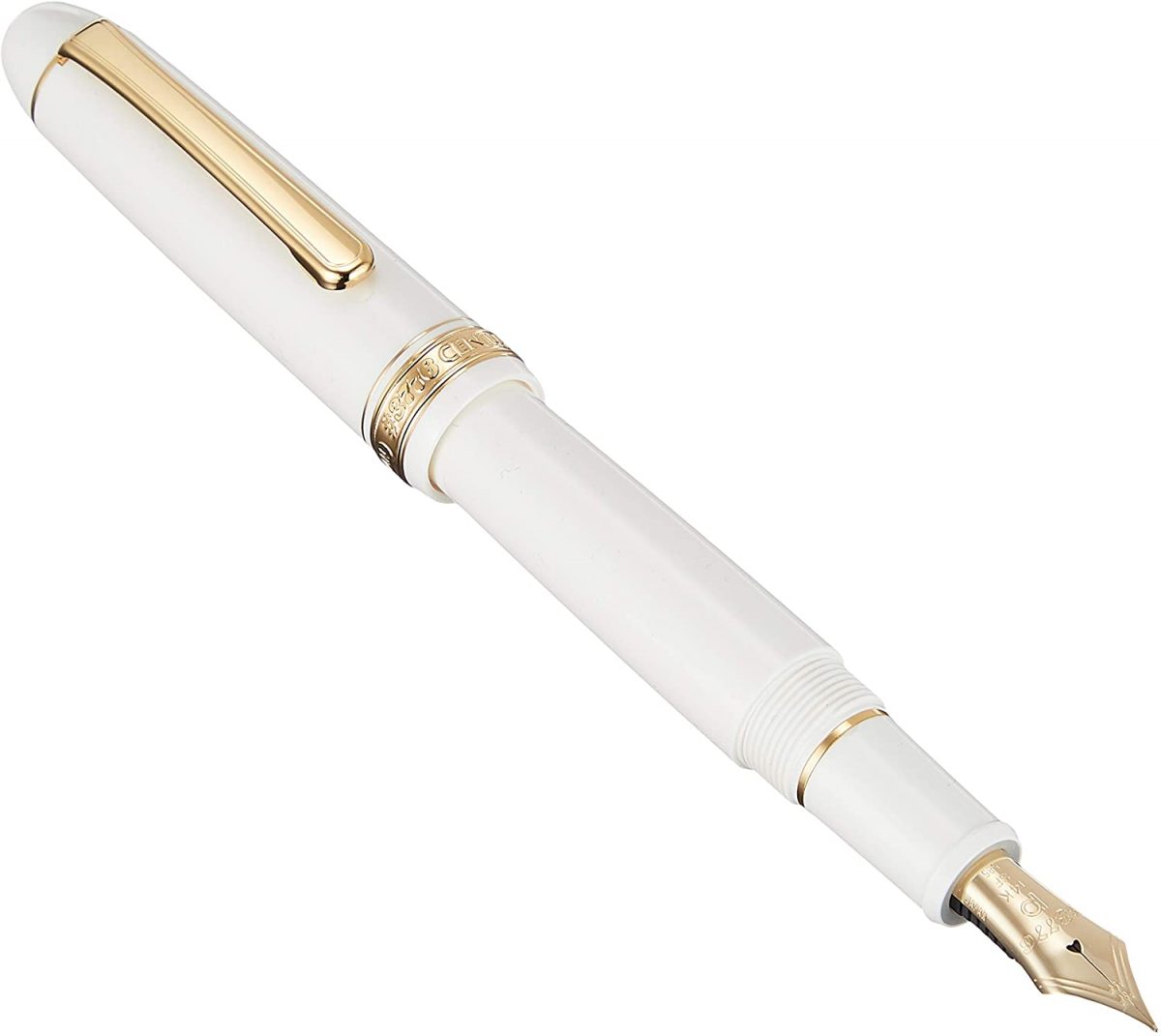

Platinum 3776 Century
- There’s a reason why the 3776 is considered to be the company’s ideal fountain pen. It comes with their “slip and seal” cap design, which is meant to prevent the nib from drying out.
- This pen can last for up to a year without drying out, even if you don’t use it within that period.
- Nib sizes range from extra fine to medium, but there are also specialty nibs such as the semi-flexible soft fine and the needlepoint ultra extra fine.
- The 3776 has a comfortable weight and its size makes it suitable for any hand size.
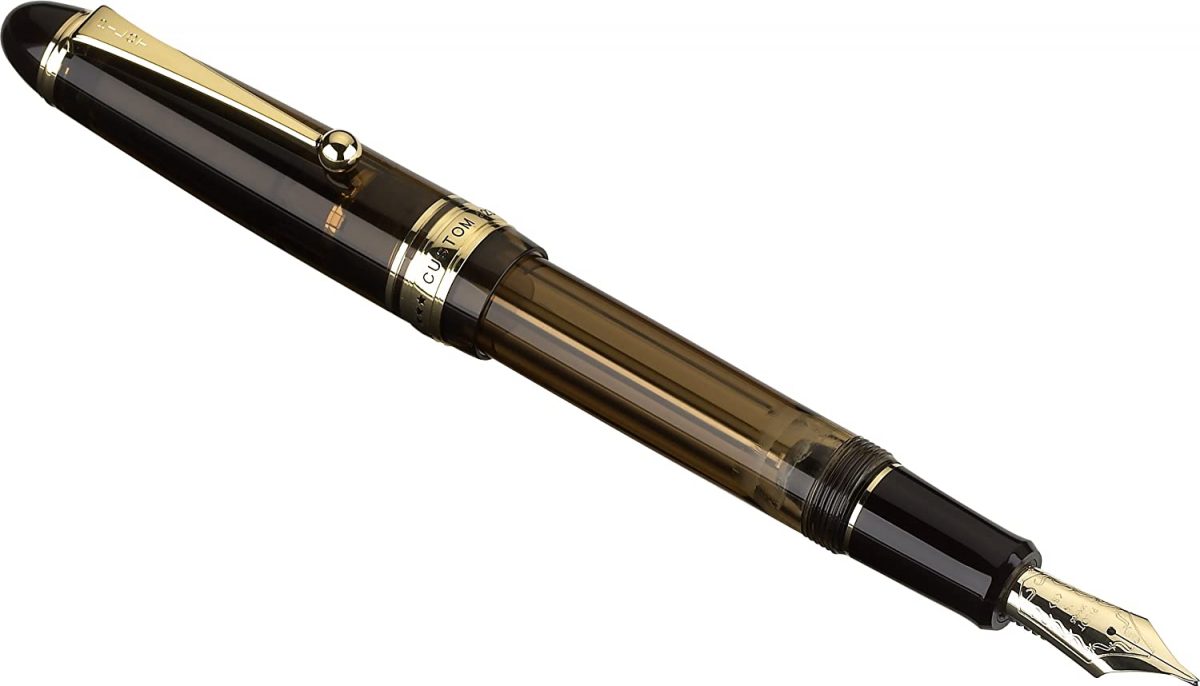

Pilot Custom 823
- Comes with a gold and amber finish, which is a feast for the eyes. It looks about the same as it costs.
- The Custom 823 also has a vacuum filling system and can refill instantly with just a single stroke of its plunger. It is much faster compared to almost any other fountain pen.
- It is one of Pilot’s larger pens, but its resin body keeps it light and comfortable to hold.
Best Disposable Fountain Pen


Pilot Petit 1
- This makes for a really great pocket or purse ink pen because of its size.
- It can be refilled with a cartridge, which also means the ink amount is limited.
- Comes in eight colors to choose from and one fine nib.
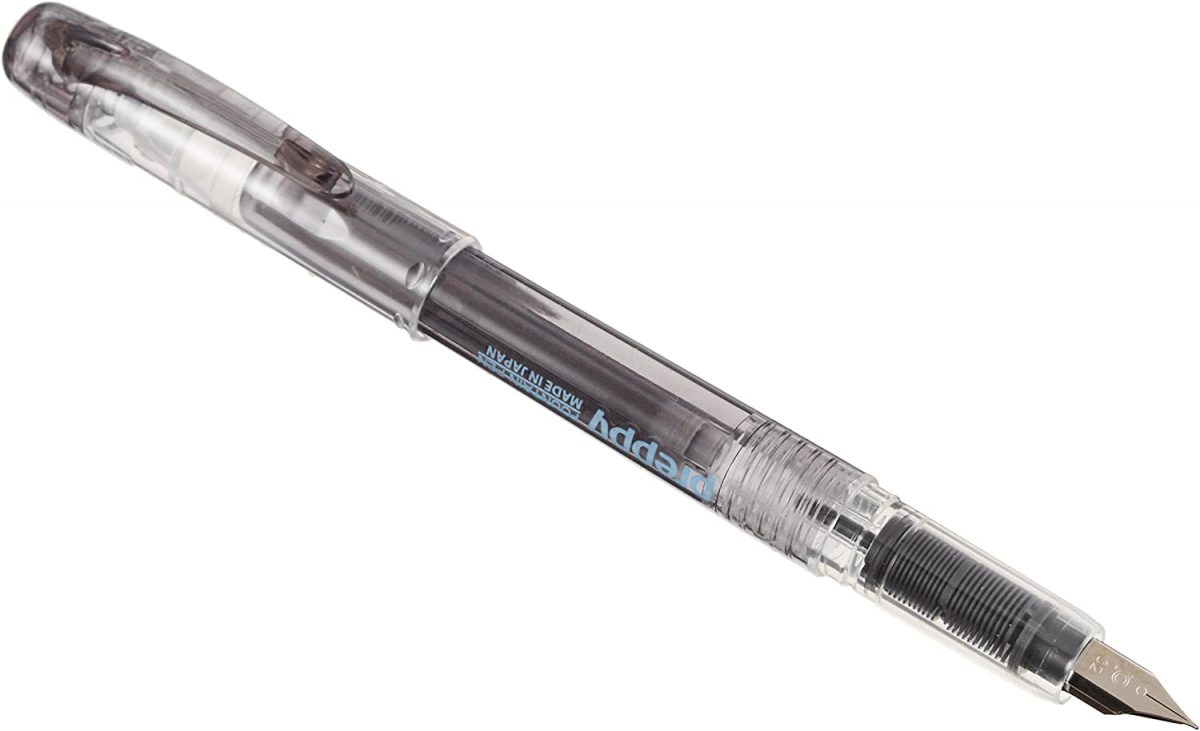

Platinum Preppy
- This disposable fountain pen, unlike the Petit, is full sized and comes in clear plastic so you can check on the ink cartridge easily.
- It does look pretty cheap, given the material and the fact that there’s a lot of text printed on the barrel itself.
- The preppy is often compared to the Varsity since both are similar in barrel size and fountain pen tip
- This can be purchased with a converter so you can use any ink you like.
Best Demonstrator Fountain Pen


Opus 88 Koloro
- Well-made and feels substantial once held.
- Comes with an eyedropper filling system and can hold a significant amount of ink.
- A bit oversized compared to others in the same style, but it is still comfortable to use.
- Appearance-wise, it’s simple but doesn’t look cheap.


Pelikan M205 Demonstrator
- Comes with Pelikan’s standard piston-filling tech, which means it can only be used with fountain pen ink bottle.
- You can choose between their standard steel nibs in XF, F, and M sizes.
- Compared with the Opus 88 Koloro, this one is on the smaller side.
Best Fountain Pen Inks
The thing with fountain pens is that the ink you use matters greatly toward its performance. As such, you would want to get the best one to make your experience with it go smoothly. There are many different ink varieties, but here are some of the best choices.
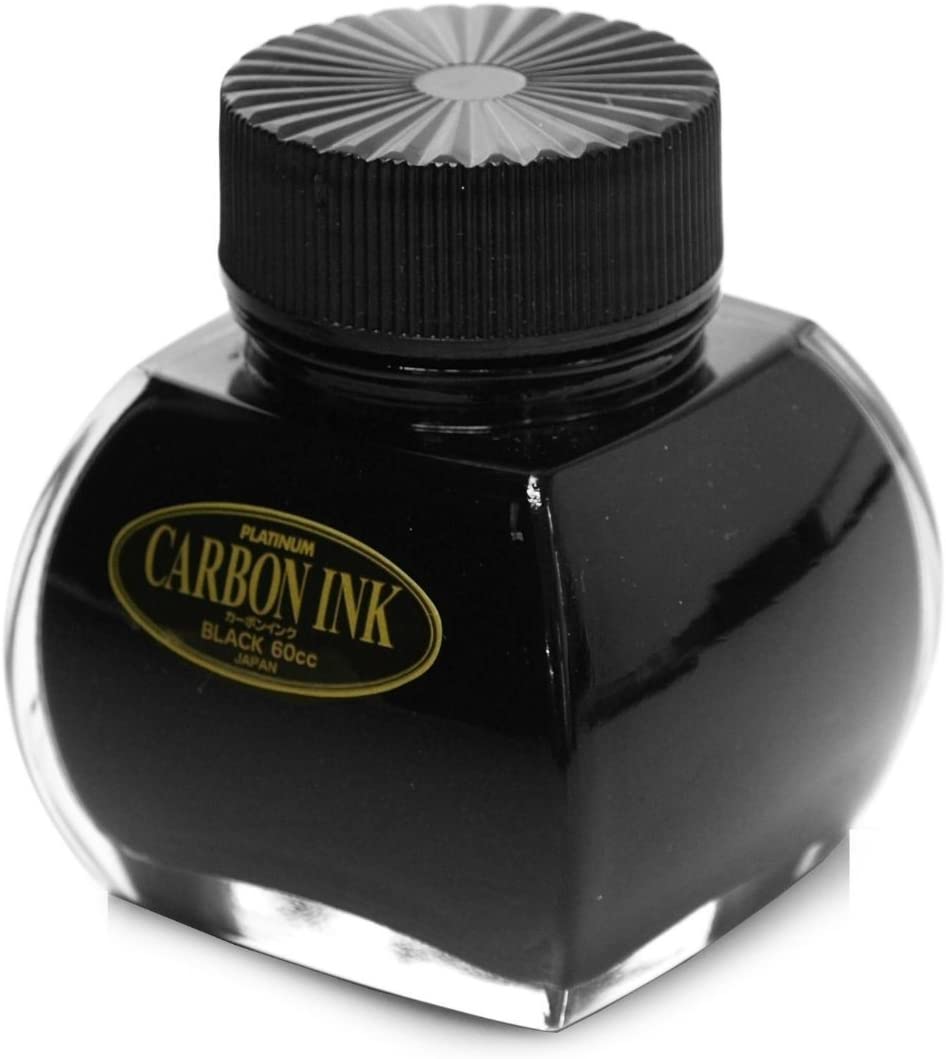

Platinum Carbon Black
- Resistant to feathering.
- Doesn’t bleed through even on ordinary paper.
- Resistant to both water and fading.
- Difficult to clean or remove from your pen once it dries inside of it.
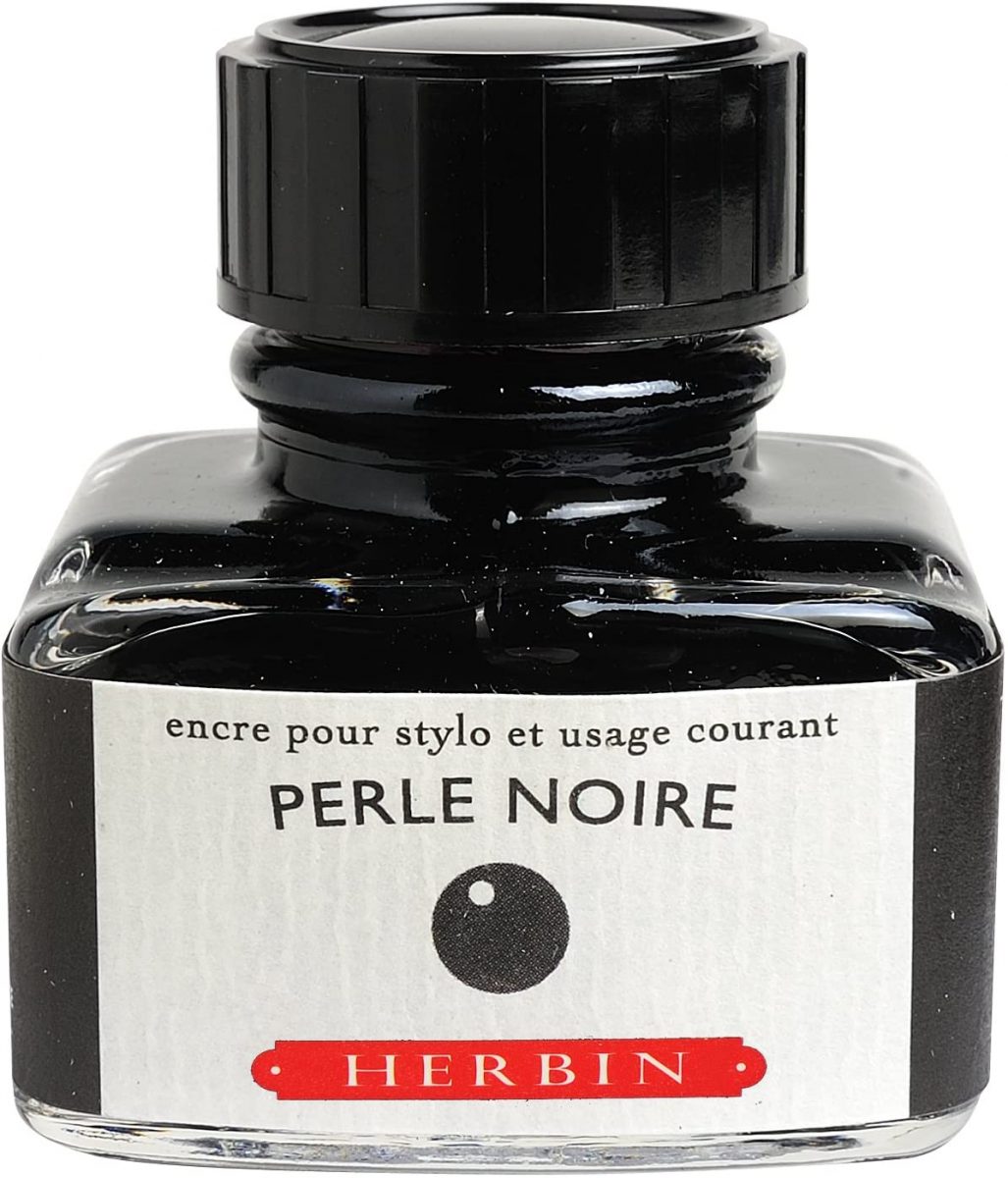

J. Herbin Perle Noire
- It isn’t as waterproof as carbon black, but it is water resistant enough to keep your notes legible if it gets wet.
- Doesn’t feather as much as other inks, even on ordinary paper.
- Comes in a standard fountain pen ink cartridge so it can be used with almost every fountain pen.
- This is much easier to clean when compared to Carbon Black.
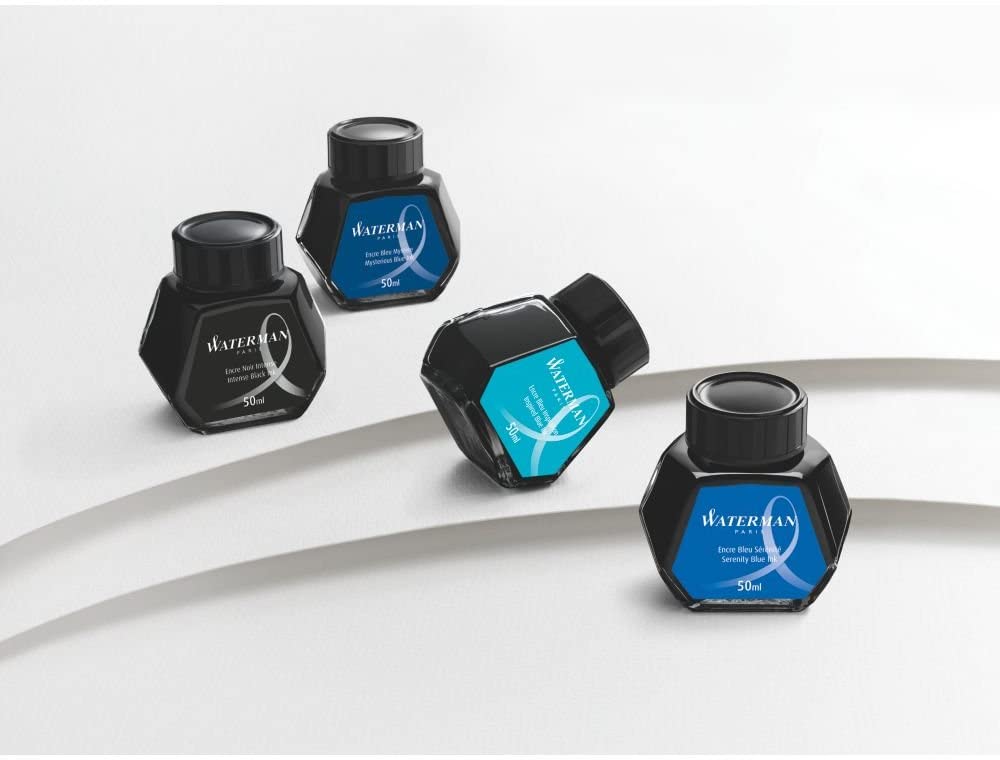

Waterman Serenity Blue
- This is best known for its versatility and can be used on any paper.
- It isn’t waterproof, but will withstand a fair bit of water before fading.
- This comes in both fountain pen ink bottle versions and a standard international fountain pen ink cartridge.
- The ink can be easily cleaned with a good flushing.
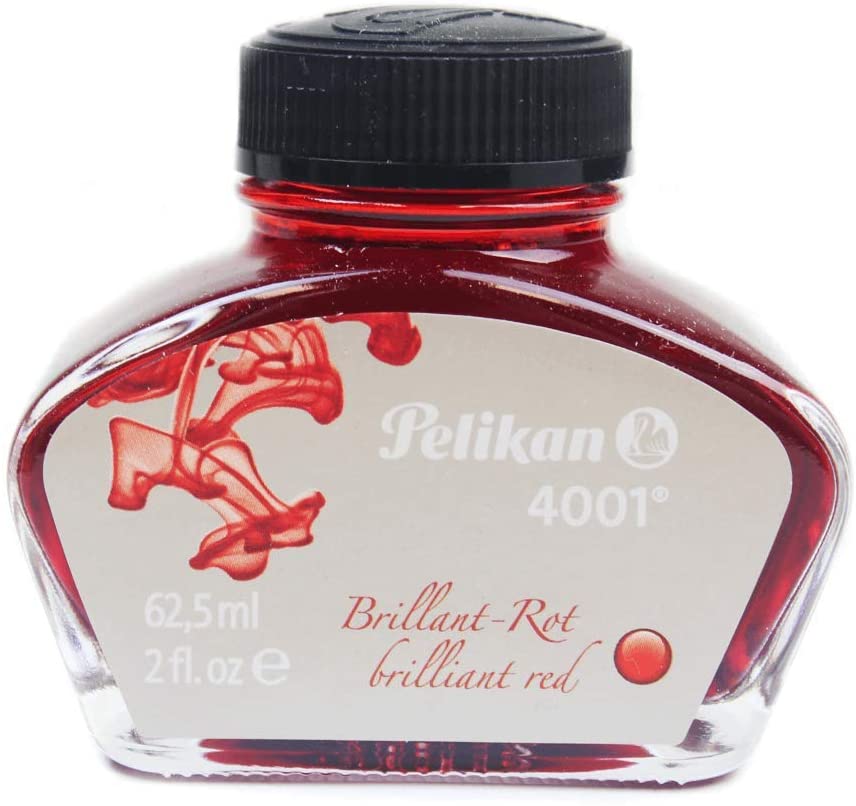

Pelikan Brilliant Red
- On ordinary paper and even when using broad nibs, this will not feather or bleed through.
- The color is certainly eye-catching, making it great for editing and marking purposes.
- Comes in both fountain pen ink bottle versions and standard international cartridges.
Best Notebooks for Fountain Pen
Given the nature of these fancy pens, choosing the right kind of fountain pen paper and notebook is also imperative. You wouldn’t want to waste material by using the wrong one, as you can experience bleedthroughs and even ripped surfaces if you choose bad paper. Here are our suggestions:
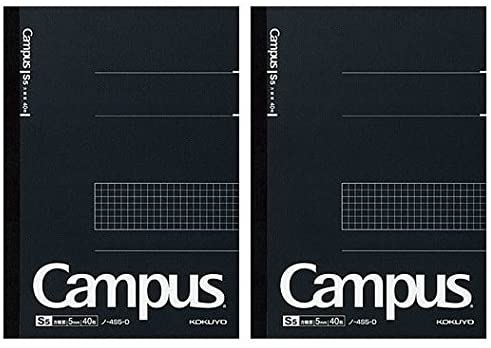

Kokuyo Campus High Grade MIO
- If you want smooth and lightweight paper, this is the best choice.
- It is available in both A5 and B5 sizes.
- Aesthetically, it comes with a minimalist glossy cover and metallic binding strip.
- This can handle even fine-nibbed fountain pens.
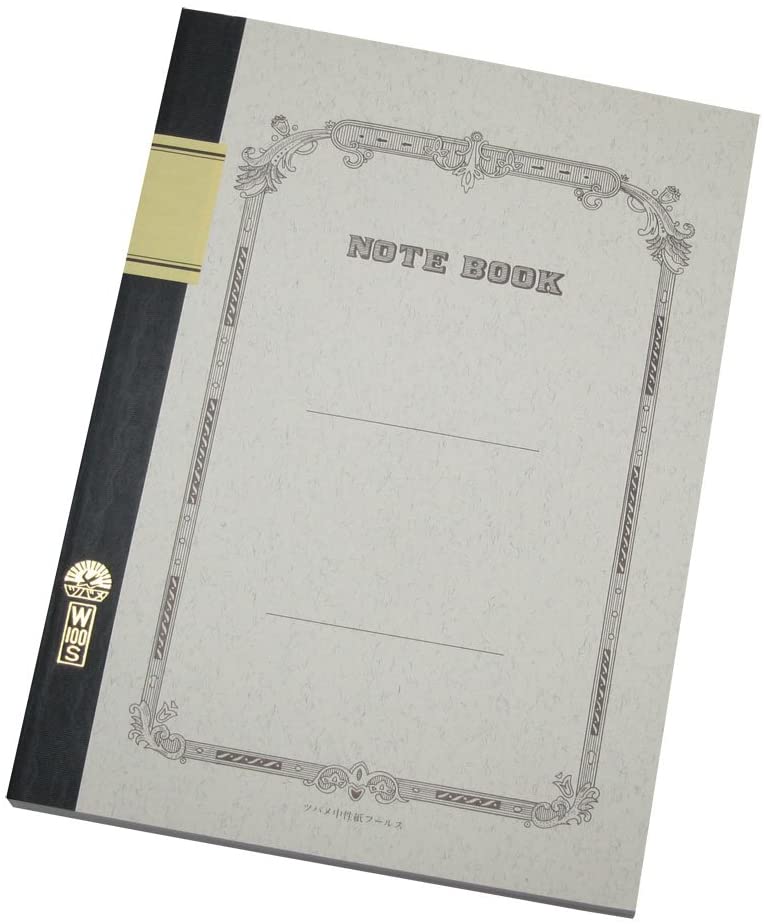

Tsubame Notebook
- This is best for people looking for something with slightly more texture than the Kokuyo.
- You can choose from two tones, white or ivory.
- This is also available in A5 and B5 sizes.
- The cover is simple cardstock, which actually adds to its appeal.


Rhodia Webnotebook
- This one is a favorite among fountain pen users, particularly because of its dot grid style. It allows for people to get the benefits of grid paper, without the unappealing solid lines.
- Rhodia is highly suggested for beginners, given the ease of its use and the variety of styles on offer.
- It is available in both A5 and pocket sizes.
Do note that there is no such thing as a perfect notebook or paper. Each one is different and it all boils down to preference. Slight bleedthroughs, especially if you are heavy-handed or using a broad nib for your fountain pen, are almost inevitable, so it does take some experimentation to find the best one for you.
In Conclusion:
With everything going digital, the art of writing becomes all the more important. For those who want to preserve it, the use of fountain pens helps with elevating the experience and making it more enjoyable. Where to buy fountain pens? You might be surprised by how accessible these are. If you’re looking for luxury, however, there are specialty stores that will cater to your needs.
Whether you’re going for a Muji fountain pen or a Mont Blanc fountain pen, the first thing you need to do is learn about how it works. The more you know, the better your experience will be.

